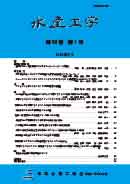59 巻, 1 号
選択された号の論文の16件中1~16を表示しています
- |<
- <
- 1
- >
- >|
学会賞受賞講演
-
2022 年 59 巻 1 号 p. 1-7
発行日: 2022/06/15
公開日: 2022/06/10
PDF形式でダウンロード (6779K)
研究論文
-
2022 年 59 巻 1 号 p. 9-17
発行日: 2022/06/15
公開日: 2022/06/10
PDF形式でダウンロード (3831K) -
2022 年 59 巻 1 号 p. 19-26
発行日: 2022/06/15
公開日: 2022/06/10
PDF形式でダウンロード (4898K)
短報
-
2022 年 59 巻 1 号 p. 27-29
発行日: 2022/06/15
公開日: 2022/06/10
PDF形式でダウンロード (1358K)
報文
-
2022 年 59 巻 1 号 p. 31-36
発行日: 2022/06/15
公開日: 2022/06/10
PDF形式でダウンロード (671K) -
2022 年 59 巻 1 号 p. 37-40
発行日: 2022/06/15
公開日: 2022/06/10
PDF形式でダウンロード (2247K) -
2022 年 59 巻 1 号 p. 41-44
発行日: 2022/06/15
公開日: 2022/06/10
PDF形式でダウンロード (1990K) -
2022 年 59 巻 1 号 p. 45-47
発行日: 2022/06/15
公開日: 2022/06/10
PDF形式でダウンロード (3718K) -
2022 年 59 巻 1 号 p. 49-55
発行日: 2022/06/15
公開日: 2022/06/10
PDF形式でダウンロード (1229K) -
2022 年 59 巻 1 号 p. 57-60
発行日: 2022/06/15
公開日: 2022/06/10
PDF形式でダウンロード (6767K) -
2022 年 59 巻 1 号 p. 61-63
発行日: 2022/06/15
公開日: 2022/06/10
PDF形式でダウンロード (3984K) -
2022 年 59 巻 1 号 p. 65-67
発行日: 2022/06/15
公開日: 2022/06/10
PDF形式でダウンロード (574K) -
2022 年 59 巻 1 号 p. 69-71
発行日: 2022/06/15
公開日: 2022/06/10
PDF形式でダウンロード (3412K) -
2022 年 59 巻 1 号 p. 73-79
発行日: 2022/06/15
公開日: 2022/06/10
PDF形式でダウンロード (8258K) -
2022 年 59 巻 1 号 p. 81-83
発行日: 2022/06/15
公開日: 2022/06/10
PDF形式でダウンロード (597K)
資料
-
2022 年 59 巻 1 号 p. 85-86
発行日: 2022/06/15
公開日: 2022/06/10
PDF形式でダウンロード (203K)
- |<
- <
- 1
- >
- >|
